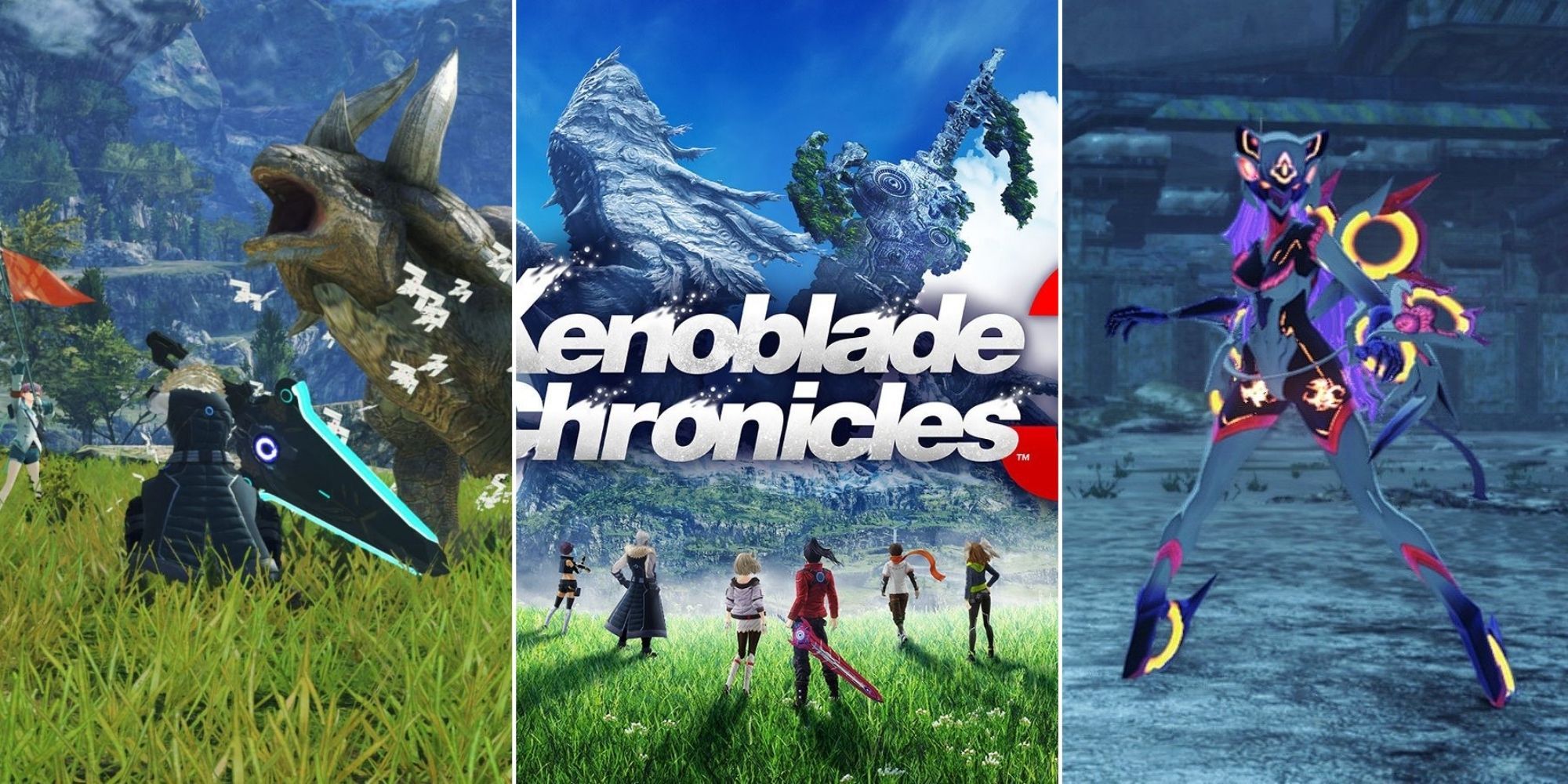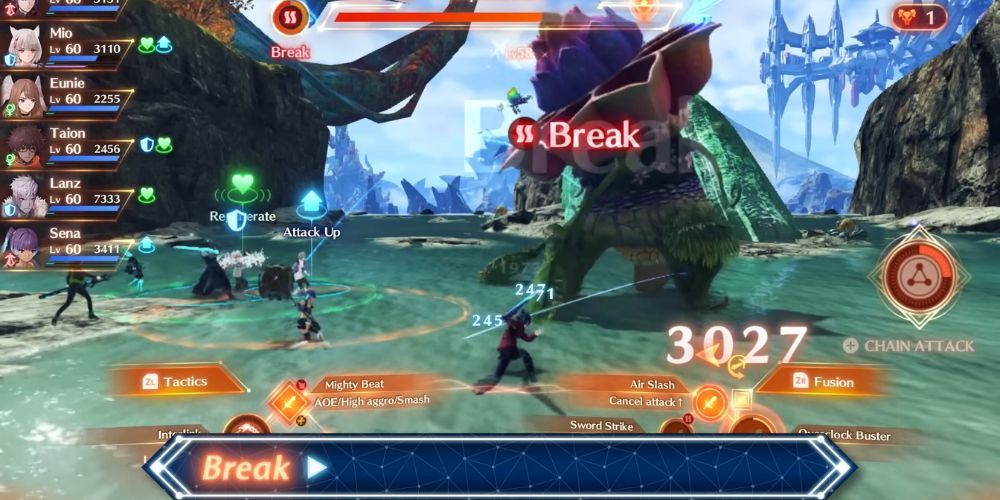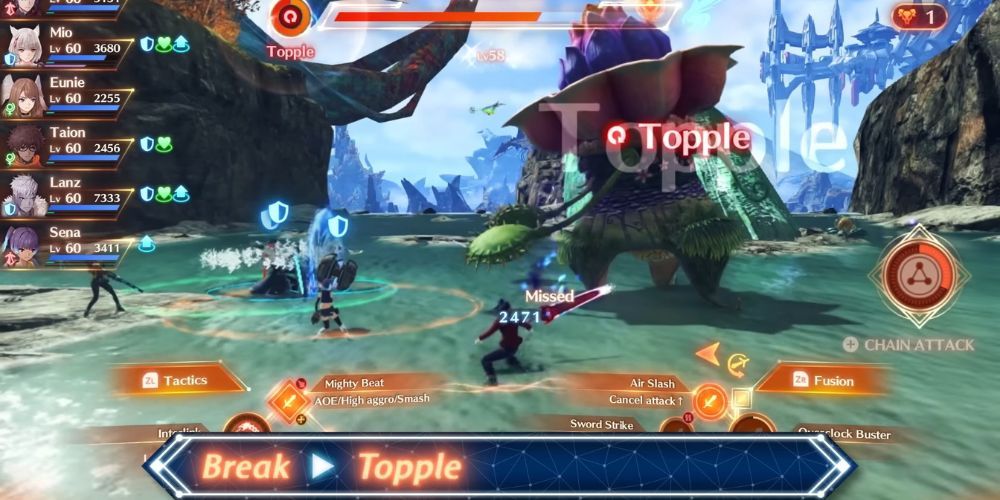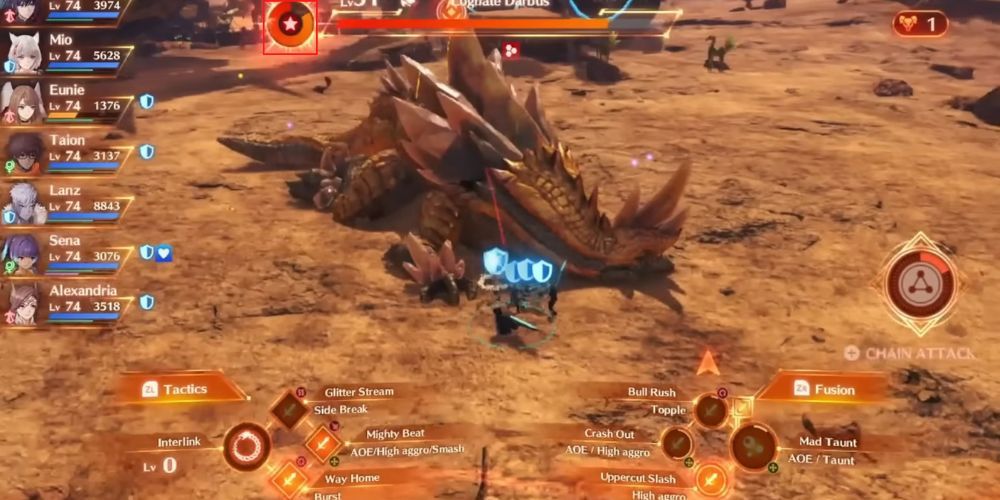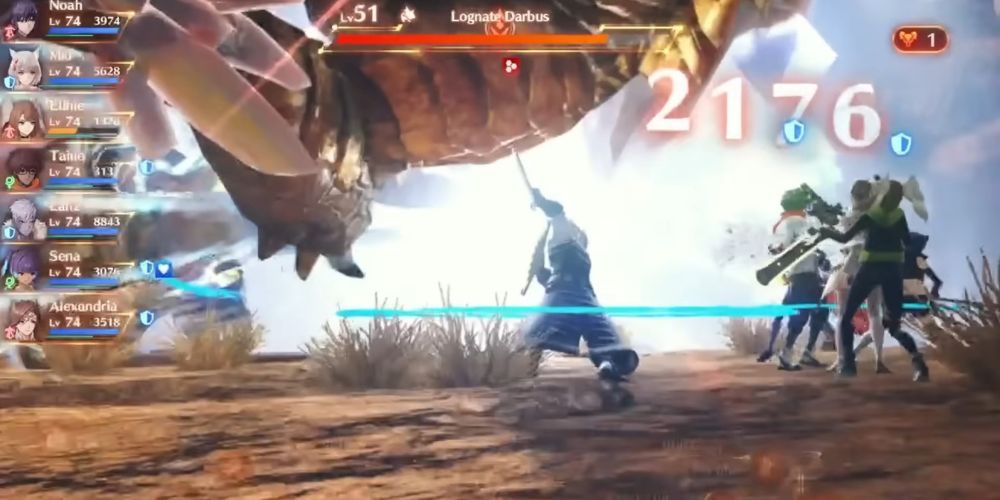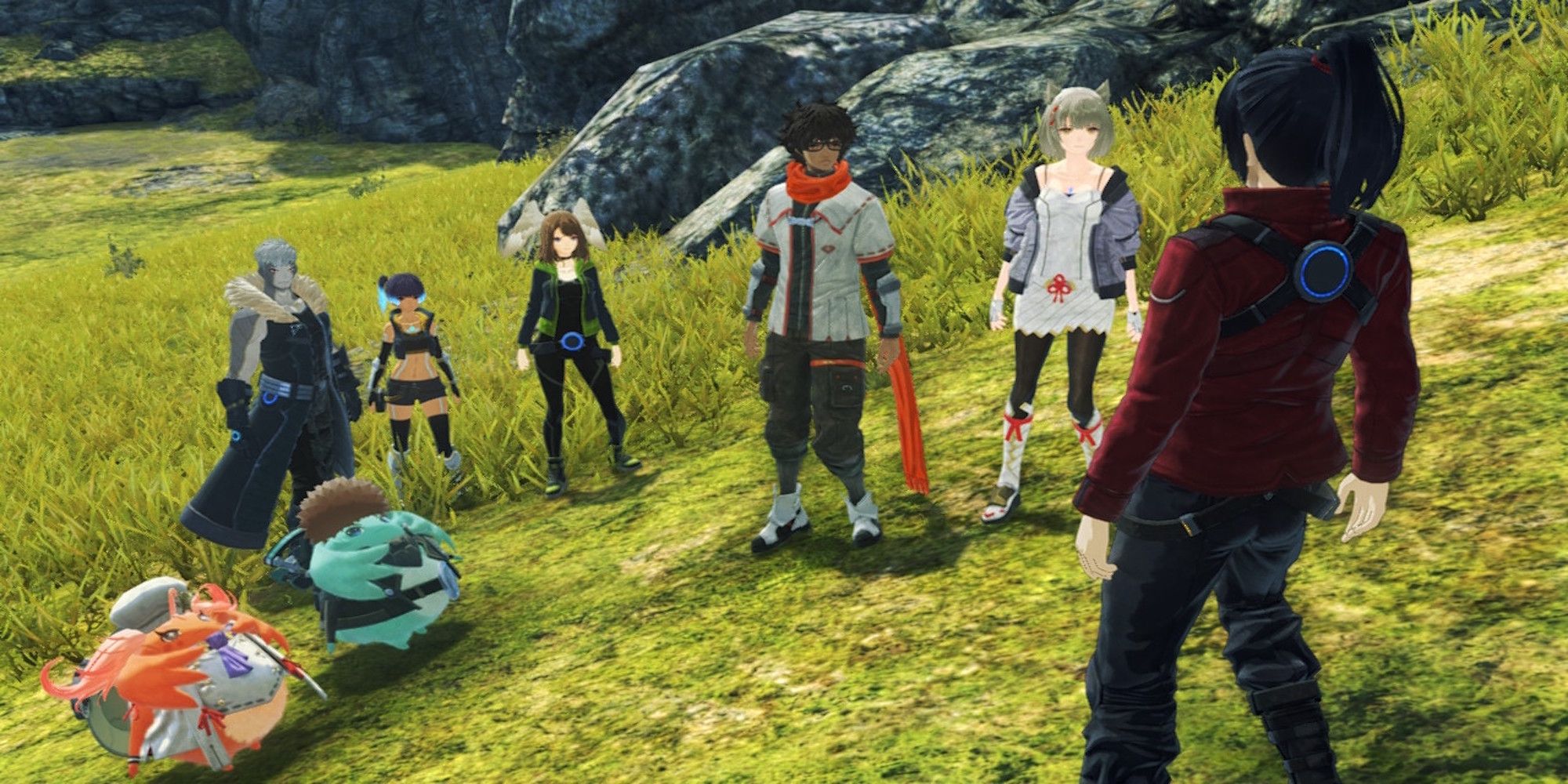As the 4th entry in the Xenoblade Chronicles series, Xenoblade Chronicles 3 includes a host of narrative, environmental and mechanical elements introduced and developed over the series’ 12 year run. Considering how important the series’ unique combat is to its identity, it is quite the tall order to mesh all these elements without making battles feel bloated.
One such returning element are the art combos. Unlike combos in a fighting or action game, these combos seek to stack specific effects from battle arts in order to lock down and otherwise manipulate enemies. These first appeared in XC1, and are here once again, although with some minor twists.
Break
Every combo needs a combo starter, and break has been Xenoblades' trusty starter since XC1. Break’s main function is in opening enemies up for topples, so it doesn’t carry much power or utility by itself. One neat trick with break though, is that it stops whatever action the target is currently doing, so if timed right it can cancel an enemy’s attack before it has a chance to fully activate.
As the combo starter, break is much more accessible than the other effects in the combo, and can be first found on the ‘sword strike’ art, which is available to Noah from the start of the game. This and other arts that cause break will only do so when attacking enemies from the side, however. This means that if the character with break is being targeted by enemies, they will likely be unable to activate it, stopping the whole combo before it can start. Once break has been activated, an icon will appear to represent it, showing the countdown to when the effect will wear off.
Topple
Topple is a staple of the Xenoblade series along with break, and is quite useful in all situations. Its main benefit is that it leaves enemies immobile for a limited amount of time, preventing them from dealing any damage to the player’s party. While they aren’t moving, characters with position-based arts can also get them off without having to worry about the target turning to face them, thus providing an opportunity for easy damage or to heal the party.
In XC1, Rein was the main source of topple for the party, and now that role falls to Lanz. He is one of the first characters in the party, so his ‘bull rush’ art can be used very early on to turn breaks into topples. Although due to XC3's class swapping system, any character can use his class and gain access to bull rush, or change to another class with an art that also activates topple.
Once topple is activated, the topple icon will replace the break icon, and the countdown will reset in preparation for the next part of the combo.
Daze
Back in XC1, daze was the next step in the combo, and it has now returned in XC3. The daze state is similar to topple in the sense that it immobilizes an enemy, stopping them from dealing any damage to the party. What makes daze special though, is that it lasts slightly longer than topple, while also preventing enemies from gaining any aggro from arts. This means that while an enemy is dazed, attackers can deal as much damage as they like and use arts with impunity without worrying about being targeted by enemies afterwards.
Unlike the alternative, launch which is unlocked a little later in the game, daze is available from the start via Eunie and her ‘myopic screen’ art. Daze also synergises well with specific arts that deal more damage to dazed enemies, such as ‘overclock buster’ from the swordfighter class. This means that with the proper team setup, daze can be made even more powerful.
Once daze is activated, the daze icon will replace the topple icon, and the countdown will reset in preparation for the next part of the combo.
Burst
A new combo ender for daze, burst seeks to provide utility and support for the party instead of full on damage. When a dazed enemy is hit with burst, it will drop a bunch of its possible item drops, allowing the player to collect these much easier. It might be worth even running away after using burst to obtain a needed item. After a burst, enraged enemies will also lose their enraged status. This is something that some enemies gain at low health, making them hit harder. Using a well timed burst to knock them out of it might just be the party’s saving grace.
While break, topple and daze are accessible quite early on, burst’s extra utility means it must be earned through obtaining and leveling up classes. For example, when the thaumaturge class is unlocked, leveling it up will eventually unlock the master art ‘demise thrust’ which is a safe way to inflict burst. Afterwards, a character can keep it even when they swap to another class. Once a burst is activated, the daze icon will disappear, and the enemy will return to normal.
Strategy
The burst combo is much better for defense than offense, and can help the party stay alive during tougher fights. However, if the party’s attention is split amongst several enemies, they might not know to activate it in time, causing the combo to be squandered.
The game’s AI party members are programmed to pursue a combo whenever available, but there are some manual options to make their use of it more consistent. Players can make use of tactics to order the party to focus on one enemy, or alternatively, command them directly to focus on carrying out the combo.
Xenoblade Chronicles 3 is out now on Nintendo Switch.

